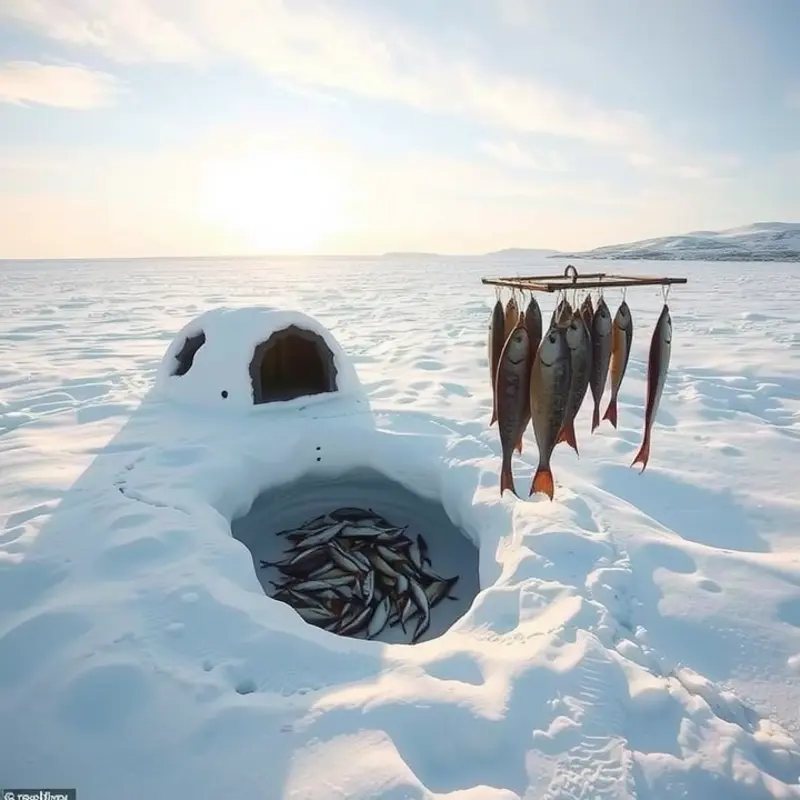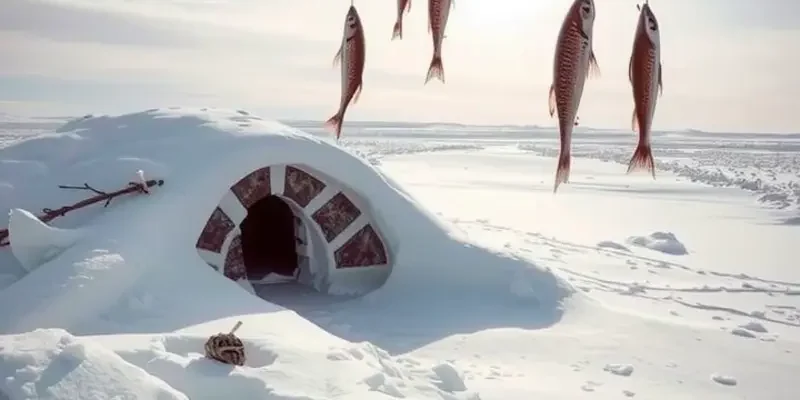In cold climates, where fresh produce is often scarce, ingenious methods of food preservation are essential for survival and culinary tradition. From the Arctic’s frozen landscapes to the high-altitude mountains of the Alps, diverse cultures have developed unique techniques to extend the life of their food. These practices not only ensure sustenance during harsh winters, but they also add depth and character to culinary traditions. Join us as we explore how communities around the globe innovate and adapt, turning necessity into an art form of food preservation.
The Inuit Way: Preserving Food in the Arctic Circle

In the vast and icy expanse of the Arctic Circle, the Inuit peoples have developed unique food preservation methods crucial for survival. Among these, fermenting fish is both a culinary art and a traditional necessity. The process begins with catching seasonal fish like trout and char. Once caught, these are placed in seal skin pouches and buried under the permafrost. Over weeks or months, natural bacteria ferment the fish. This alters its texture and flavor, creating a pungent, nutrient-rich source of sustenance.
Drying game meat is another integral method, showcasing resourcefulness born from environmental constraints. Caribou and seal meat are commonly hung on wooden racks, allowing cold winds to dehydrate them efficiently. This drying technique ensures that meat remains edible throughout the severe winters. The amino acids are preserved, providing vital nutrition when fresh supplies are scarce.
The functionality and simplicity of ice cellars further illustrate the Inuit’s ingenuity. Dug deep into the frozen ground, these natural refrigerators store perishables year-round. Primarily used for keeping meat and fish, these cellars maintain a consistent, below-freezing temperature, harnessing the glacier-like conditions of their surroundings. This method complements their diet beautifully by preventing spoilage without electricity or complex technology.
These practices exemplify a profound connection between the Inuit and their environment, driven by necessity yet celebrated culturally. Foods prepared through these methods are more than sustenance; they represent a lineage of culinary heritage passed down through generations. As essential as their nutritional value is, these preserved foods are equally valued for their role in maintaining cultural identity.
For further insights into the role of traditional methods in sustainable food practices, explore how cultures worldwide integrate ethical guidelines in sourcing ingredients here. The Inuit preservation techniques, while distinctive, share a communal philosophy found in other traditional cuisines globally, focusing on sustainability and respect for nature.
By embracing these time-honored methods, the Inuit demonstrate resilience unique to the Arctic. Such strategies not only satisfy immediate dietary needs but ensure the continuation of a rich cultural legacy shaped by the land and sea. As seasons shift and landscapes eventually transform, these traditions stand as enduring testaments to human adaptability and ecological harmony.
Alpine Secrets: Fermentation and Curing in the Mountains

Nestled among the challenging terrain of the Alps, communities have preserved their rich heritage through a tapestry of culinary techniques, including fermentation and curing. These methods are not merely practical solutions for harsh winters; they also embody a deep cultural lineage. Through skill and patience, the mountain dwellers have transformed basic resources into exquisite staples such as fermented cheeses, cured sausages, and pickled vegetables.
Fermented cheeses are a pinnacle of Alpine culinary art. The process begins in alpine pastures where cows, sheep, or goats graze freely, imparting unique flavors to the milk. Once milk is procured, it is left to sour naturally, harnessing the power of native bacteria. This careful process develops the distinct taste of cheeses like Gruyère and Raclette, cherished worldwide. Aging not only enhances flavor but also extends shelf life, making these cheeses central to winter diets. Proper storage is crucial to avoid spoilage and maximize enjoyment—consider exploring optimal cheese storage techniques to ensure that these treasures maintain their quality.
Curing meats is another tradition deeply rooted in the Alpine regions. The favorable microclimate, characterized by dry air and stable temperatures, provides the perfect environment for curing sausages and meats like venison or pork. Salt, herbs, and time converge in processes like salting and smoking, drawing out moisture and enhancing flavors. This results in robust creations such as speck and salami, offering a protein-rich sustenance ideal for arduous mountain life.
Pickling also plays a vital role in Alpine food culture. Seasonal vegetables, harvested before the harshest chills, are preserved by lactic acid fermentation. They take on tangy, complex flavors and become a welcome burst of freshness during the long winter months. Pickled turnips and cabbages offer not just nutrition but a vibrant splash of color and taste to otherwise starchy meals.
These preserved foods represent more than just nourishment. They are a testament to the resourcefulness and resilience of the Alpine people. During winter gatherings, these provisions bring warmth and community spirit, echoing traditions passed down through generations. Understanding the role each play in the mountain lifestyle reveals how food connects deeply with tradition and identity.
Thus, as the snow blankets the Alps, these communities gather around tables adorned with their artisanal creations. Celebrations are infused with these tantalizing flavors, sustaining both body and soul, fostering a sense of belonging and continuity. The art of fermentation and curing embodies a life’s rhythm in harmony with nature’s cycles. Delving into these practices uncovers a legacy that transcends mere sustenance, offering a taste of heritage in every bite.
Final words
Food preservation techniques have thrived in cold climates, exemplifying human resilience and creativity. From the Inuit’s ingenious freezing practices to the Alpine art of fermentation and curing, these methods do more than ensure survival; they preserve culture, tradition, and identity. Each approach tells a story of resourcefulness and connection to the environment, reminding us that food is not just sustenance but a cherished legacy. As you explore new cuisines, consider the deeply-rooted practices that shape our culinary world, offering insights into diverse cultures and their unique relationships with the goods they cultivate and preserve.








